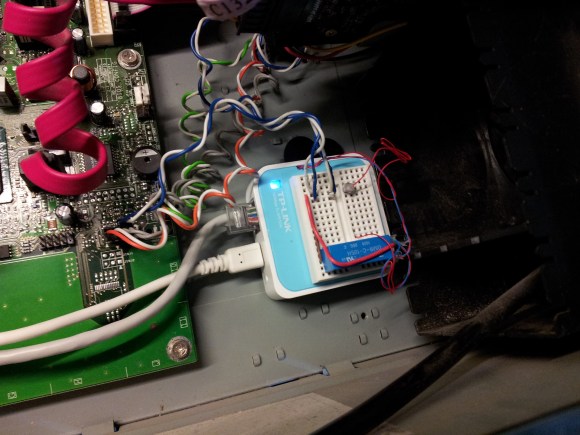We don’t want to call it a challenge because we fear the regulars at DEFCON can turn our piece of hardware into a smoking pile of slag, but we are planning to bring a bit of fun along with us. I’ll be wearing this classy headgear and I invite you to hack your way into the WiFi enabled Hackaday Hat.
I’ll be wearing the hat-of-many-scrolling-colors around all weekend for DEFCON 22, August 7-10th in Las Vegas. You may also find [Brian Benchoff] sporting the accessory at times. Either way, come up and say hello. We want to see any hardware you have to show us, and we’ll shower you with a bit of swag.
Don’t let it end there. Whip out your favorite pen-testing distro and hack into the hat’s access point. From there the router will serve up more information on how to hack into one of the shell accounts. Own an account and you can leave your alias for the scoreboard as well as push your own custom message to the hat’s 32×7 RGB LED marquee.
You can learn a bit more about the hat’s hardware on this project page. But as usual I’ve built this with a tight deadline and am still trying to populate all the details of the project.














